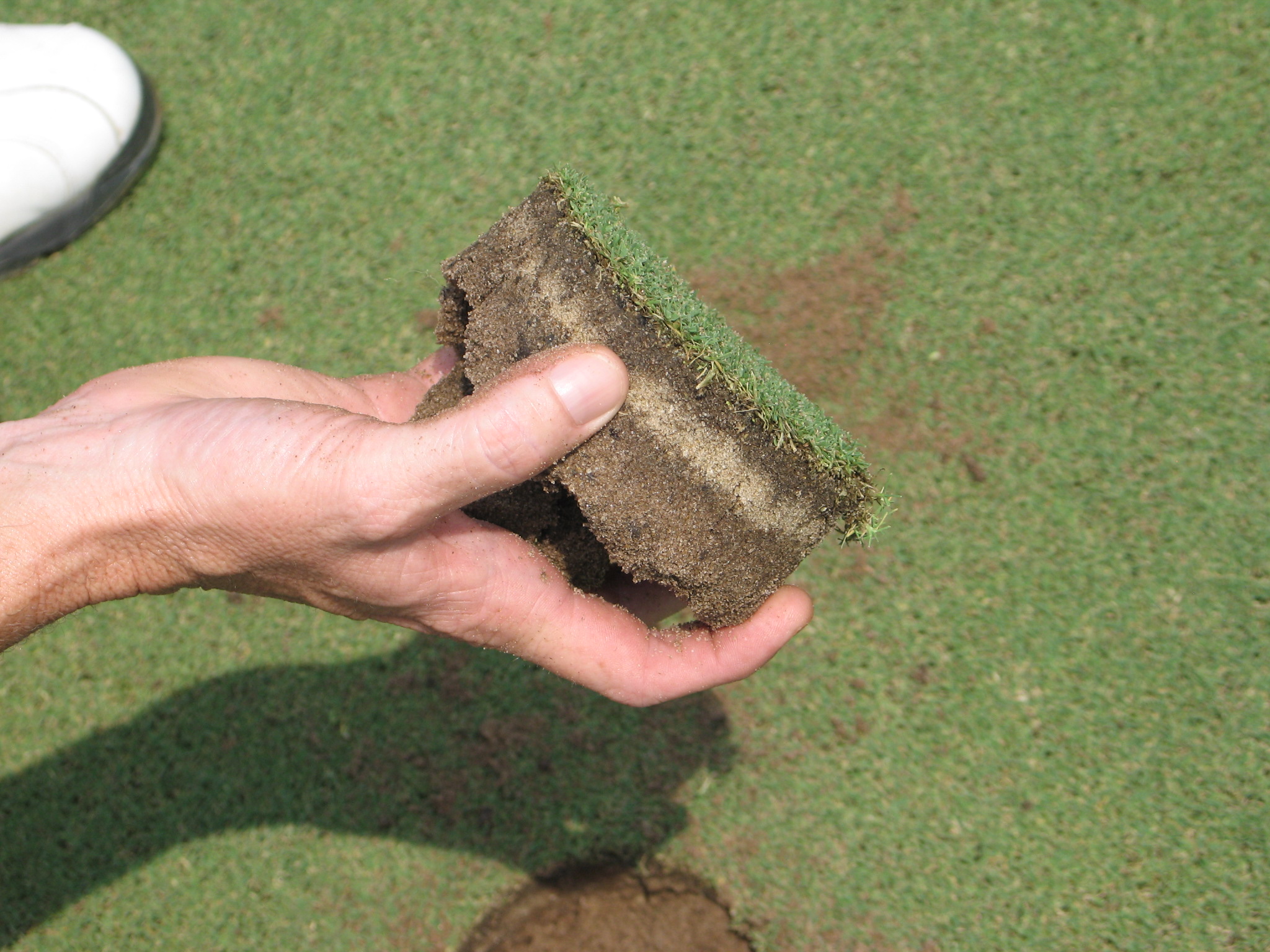-
Raymer, Paul Lindell
A novel and non-destructive approach to managing thatch accumulation on golf putting greens
Summary
Thatch management is a costly and disruptive aspect of golf course maintenance. Scientists, Jack Huang, and Paul Raymer teamed up to develop a novel way to manage thatch accumulation on golf greens by periodically spraying greens with an enzyme that speeds the decomposition of thatch without disrupting the quality of the playing surface. This technology promises tremendous savings to golf courses worldwide.
Situation
Thatch management represents a major expense and challenge for golf course managers, particularly on golf greens. Thatch is a layer of organic matter including tightly intermingled dead and living leaves, stems, and roots that develop between the soil surface and the green vegetation. Excessive accumulation of thatch can result in deterioration of the turf quality and cause problems like decreased movement of oxygen, decreased saturated hydraulic conductivity, and increased water retention. These primary problems further lead to some secondary problems like wet wilt, soft surface, black layer, limited rooting and extra-and intra-cellular freezing damage. Water penetration is often decreased because of thatch accumulation and additional inputs such as wetting agents (surfactants) must be used to facilitate water movement through the soil profile. This is not environmentally friendly and does not solve the thatch problem. Currently, thatch accumulation on golf greens is managed using cultural practices that physically remove thatch and dilute thatch levels by topdressing with sand. Cultural practices such as core aeration, vertical mowing, and topdressing are labor and cost intensive and have disruptive effects on turfgrass surfaces and quality. Many of these industry standard practices involve shutting down the greens for treatment and recovery, making them unavailable to golfers and reducing green fee revenues during and following treatment.
Response
Research at the UGA has verified that periodically spraying an enzyme solution on the surface of the greens can enhance the rate of degradation of organic matter and thus limit thatch accumulation without impacting turf quality. Our research indicates that this approach reduces the need for disruptive cultural management practices currently used on golf greens.
Impact
A standard 18-hole golf course comprises approximately 1 hectare of greens, which typically receives multiple core aerations every year. The cost of a single core aeration averages about $10,000. In addition, core aeration disrupts the playability of golf courses and many members choose not to play until the course has recovered. One superintendent at a high-end golf course in Atlanta estimated that following a core aeration event reduced rounds of play resulted in lost revenues of $133,000. There are about 18,000 golf courses in the U.S. and 31,000 in the world. If 25% of all golf courses adopted the enzymatic dethatching method and that it eliminated two core aerations a year (2 × $10,000); this accrues to a direct market value of $90 million in the U.S. and $155 million worldwide. If the recovery of lost revenues associated with disrupted play due to core aeration is considered, the potential economic impact is over $1 billion annually worldwide.
State Issue
Sustainability, Conservation, & the Environment
Details
- Year: 2020
- Geographic Scope: International
- County: Spalding
- Location: Georgia Station, Griffin
-
Program Areas:
- Agriculture & Natural Resources
Author
Research Impact

